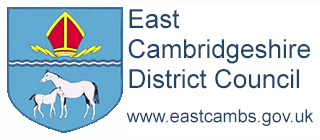Where there are trees located within or next to a development site that could be affected by proposed development, developers will be expected to provide information about any potential conflicts. The information provided should be proportionate to the scale of the development proposed:
- For extensions to an existing building or other minor works where the proposed works are outside the root protection area (RPA) of trees or hedges, on site or adjacent, a tree protection plan should be submitted, in accordance with British Standards (BS) BS 5837:2012 Trees in relation to design, demolition and construction - Recommendations.
- For extensions and most minor development where works will be within the RPA, a tree protection plan and an arboricultural method statement should be prepared by a suitably qualified professional, in accordance with BS 5837:2012 Trees in relation to design, demolition and construction - recommendations.
- For all other development that will affect or have the potential to affect trees, an arboricultural impact assessment and an arboricultural method statement (in accordance with BS5837: 2012 Trees in relation to design, demolition and construction - Recommendations) will normally be required.
N.B. Where you have identified on your application form that trees will be affected by the proposed development, but you have not submitted a tree survey as part of your application, it will not be made valid until this is received.
What is a tree survey?
A Tree Survey is expected to include the following information:-
- A schedule of the trees that are currently present on a development site detailing species, trunk diameters, branch spread in metres, tree heights in metres, tree condition, tree defects, Root Protection Areas (the minimum area that should be left undisturbed around each tree that is to be retained), please refer to the BS:5837:2012 for more information;
- An accurately detailed and scaled Tree Constraints Plan showing topography, tree positions, actual branch spread, Root Protection Areas, current and ultimate tree heights with shadow patterns to identify unreasonable obstruction of sunlight or daylight;
- Photographs of the trees;
- Pre-development Tree Works Schedule;
- Tree Protection Measures scheme to include a Tree Protection Plan showing trees to be retained, trees to be removed, precise location and specification of physical barriers/fences, ground protection measures.
Other issues that may need to be addressed in the Tree Survey are the effects of retained and planted trees on future occupiers that may lead to short and longer term pressure for excessive pruning work or tree removal, in particular:-
- Future shading and obstruction of sunlight;
- Adequate space for trees to mature and avoid dominating of buildings or gardens;
- Potential effects of leaf fall, honeydew, flowers etc.
A Tree Survey should be prepared by a suitably qualified and experienced Arboriculturist.
What is an arboricultural method statement?
An Arboricultural Method Statement describes the measures to be implemented in order to ensure that adequate tree protection is put in to place during the construction process. Typically a Method Statement would include details on
- Timing and phasing of all tree works related to the proposed development;
- Implementation, monitoring, supervision and maintenance of the Tree Protection Measures;
- Implementation, monitoring and supervision of pre-development tree works;
- Implementation, monitoring and supervision of any approved activity within the Root Protection Area of a retained tree;
- Depth and type of foundation in proximity to retained and planted trees;
- Monitoring proposals to ensure full compliance with all conditions associated with trees.
Hedges
Hedges that will be effected by development should be assessed in line with the Hedgerow Regulations 1997.
These regulations affect hedgerows which are 20m or more in length and meet another hedgerow, if the hedge is located on or alongside one of the following:
- Agricultural land;
- Common land, including Town or Village Greens;
- Land used for forestry or the breeding or keeping of horses, ponies or donkeys; or
- A Local Nature Reserve or Site of Special Scientific Interest.
